Sakai-Japan in a nutshell
.jpg)

Situated on the edge of Osaka Bay, Sakai city has been a major seaport since the arrival of ships bound for Ming China in 1469 and a significant part of Japan’s economic, industrial, and cultural identity.
In ancient times, a local suburb, Mozu, was chosen as the site for a necropolis featuring the Nintoku-tennō-ryō kofun and others. Later, in the middle ages, Sakai became an important hub for overseas trade, and developed as a city with a spirit of liberty and self-governance.
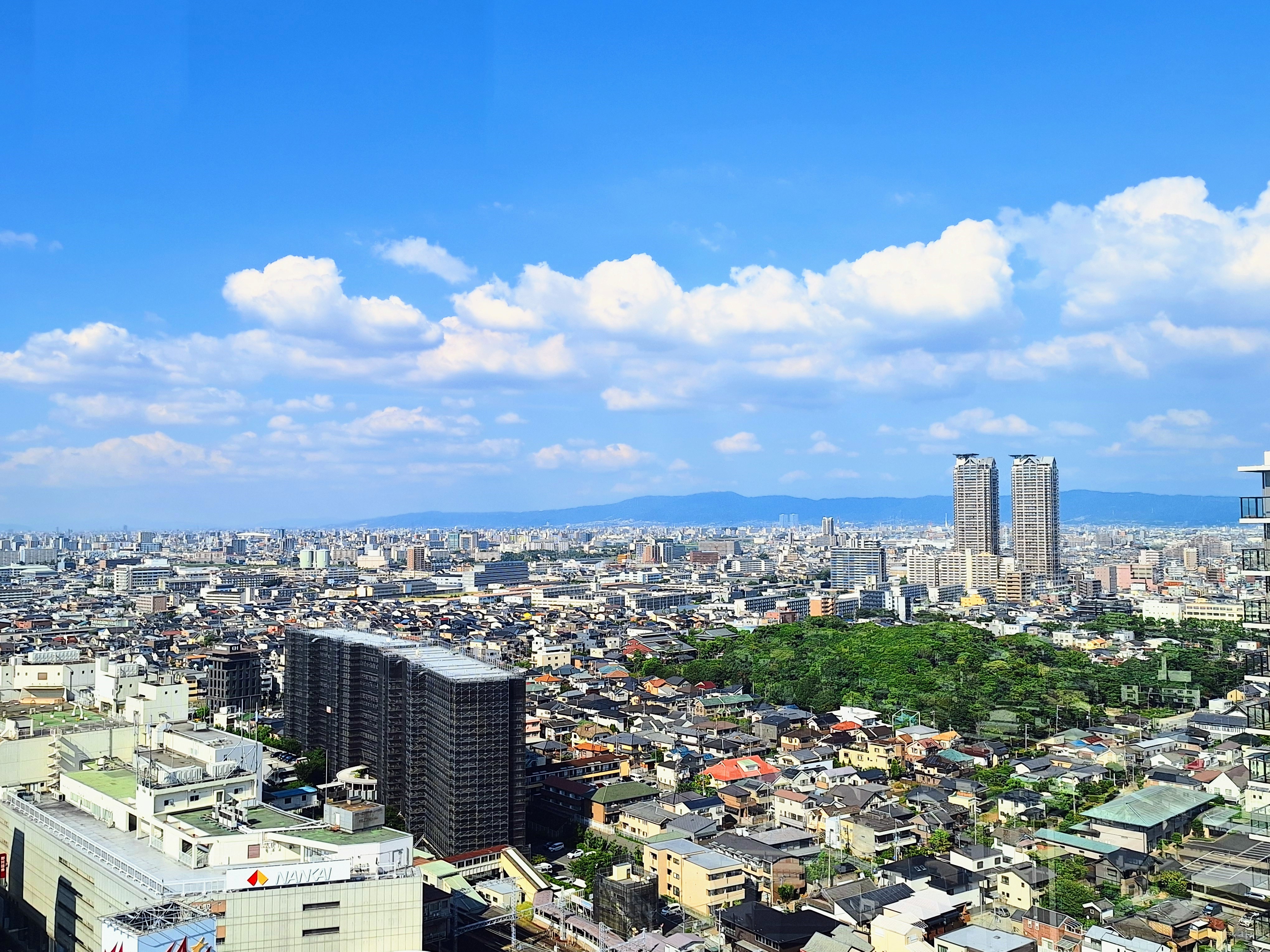
After World War II, the foundations of modern-day Sakai were laid through projects such as the creation of an extensive dockside industrial complex and Semboku New Town, a large-scale residential neighborhood. The city has a population of 830,000, and was made a “city designated by government ordinance” in 2006, which gives the city some powers normally reserved for prefectural governments. As such, Sakai is the major city in southern Osaka and a driving force behind the economy and culture of the Kansai Region. Also, the city takes great pride in volleyball in the men’s top league, with the Sakai Blazers ranking among the top 10 participants in the country.
Blending traditional and modern, featuring a world heritage site, Sakai is truly “Japan in a nutshell.”
.jpg)
The world heritage Mozu Kofungun
The World Heritage property “Mozu Kofun Group” is a tomb group of the king’s clan that ruled the ancient Japanese archipelago. The tombs were constructed between the last 4th century and the late 5th century, which was the peak of the Kofun period. They are located in the southern part of the Osaka Plain which was one of the important political cultural centers and a maritime gateway to the Asian continent.
The kofun group includes many tombs in the shape of a keyhole, a feature unique in the world, with the largest measuring as long as 500 meters in mound length. They form a group, along with smaller tombs that are differentiated by their various sizes and shapes. In contrast to the type of burial mound commonly found in many parts of the world, which is an earth or piled-stone mound forming a simple covering over a coffin or a burial chamber, kofun are architectural achievements with geometrically elaborate designs created as a stage for funerary rituals, decorated with haniwa clay figures.
Notable tumuli from this period include the Nintoku Tenno Ryo Tumulus, which is the largest in Japan; the Richu Tenno Ryo Tumulus, the third largest; and the Nisanzai Tumulus, the eighth largest.
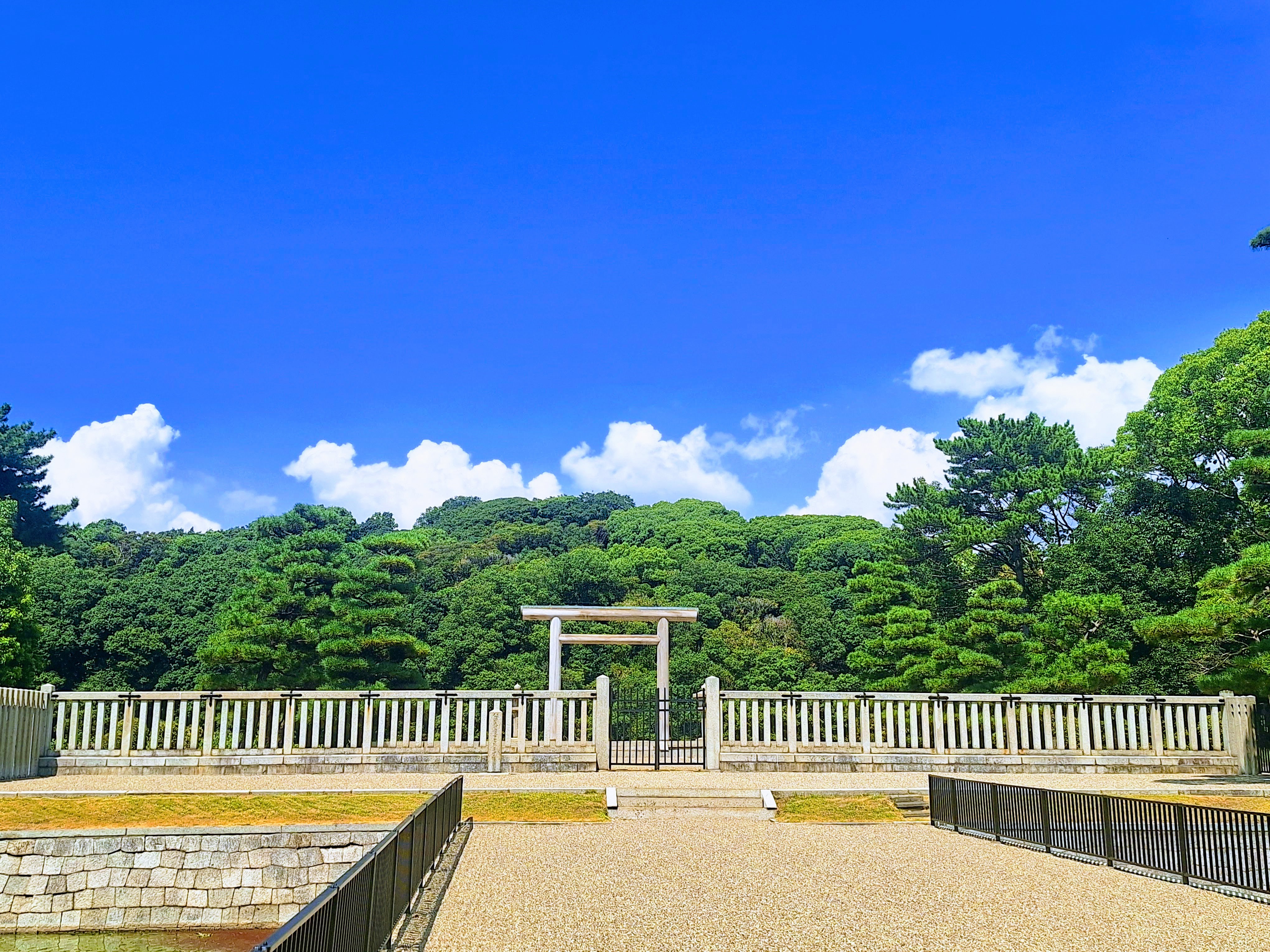
Guided tours are available for anyone interested in understanding the complete historical background, learning the secrets known only to locals, and gaining a comprehensive perspective of this captivating and unique area.
Daisen Park – Japanese Garden
The park showcases a circular hill and pond garden that spans 2.6 hectares and incorporates various traditional Japanese gardening techniques. You can find structures, bridges, ponds, flowing water, cypress and pine trees, seasonal flowers, and other distinctive elements throughout the area.
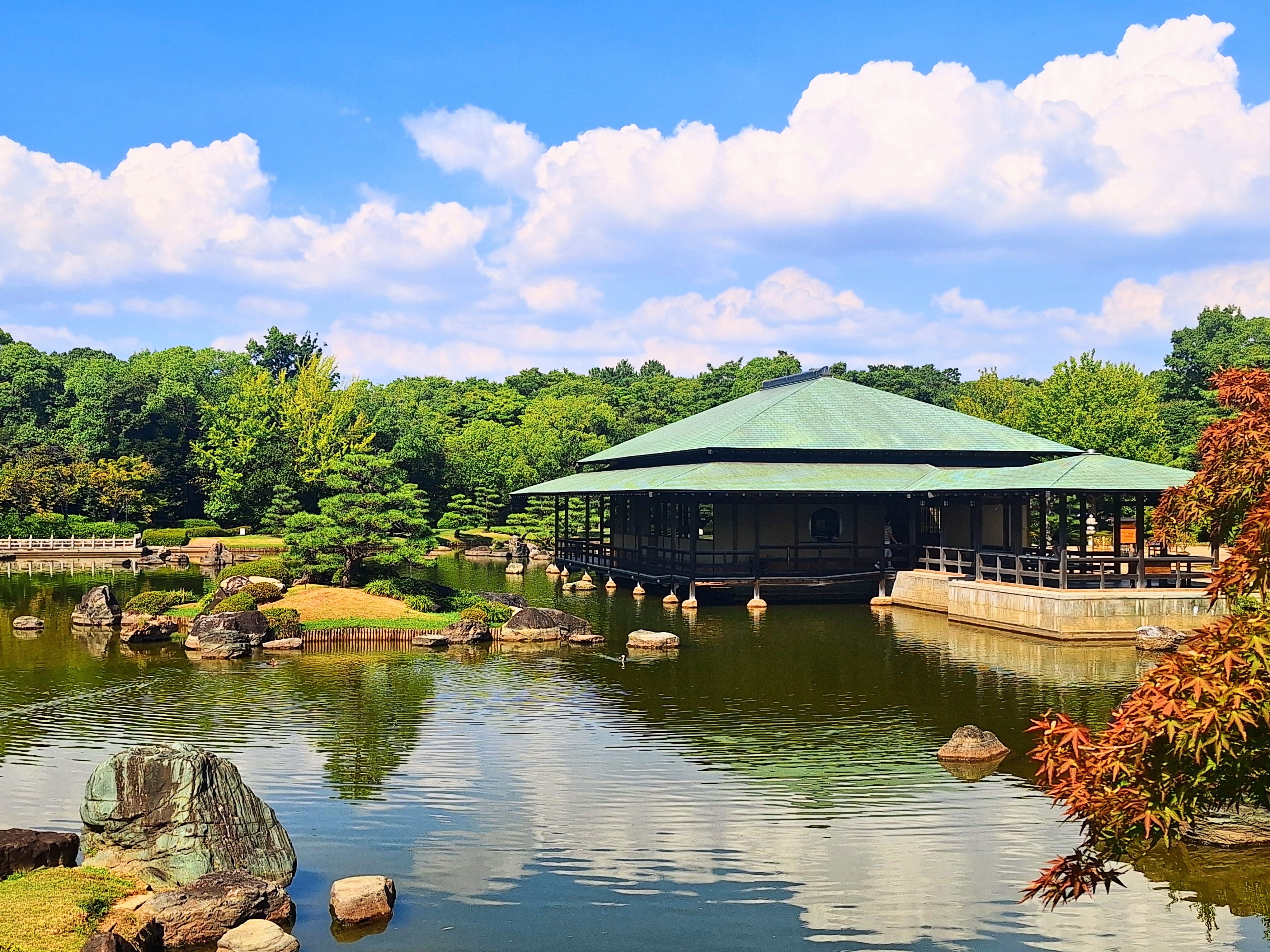
You may also savor green tea and confections while soaking in the beauty of the Japanese garden from the window of the tea house.
Honganji Sakai Betsuin Buddhist Temple
Honganji is the largest wooden construction in Sakai, and it features the Main gate, Scripture Repository, Onarimon Gate with Drum Tower, Bell Tower and Buddha’s Hall.
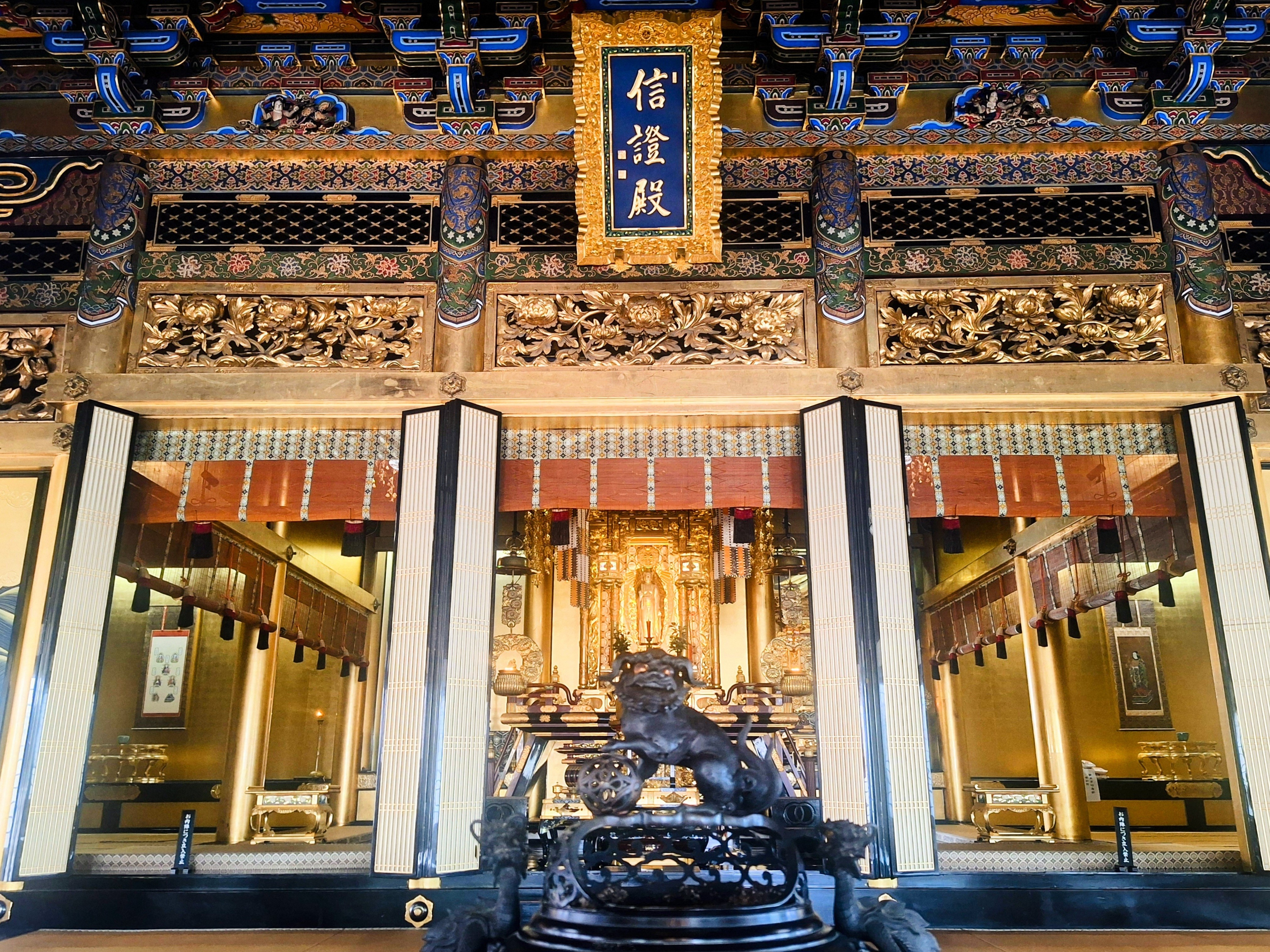
Honganji Sakai Betsuin is said to have been founded by Yoshiuji Ashikaga’s fourth son, Suke. In 1470, Doken invited Rennyo to rebuild the hall. The main hall was completed in its current location in 1728, but was destroyed in a fire in 1798, leaving only the front gate and bell tower.
The current main hall was rebuilt in 1825. Amida Nyorai is enshrined in front, Shinran Shonin to the right, and Rennyo Shonin to the left. The sliding doors separating the inner and outer sanctuaries of the hall depict scenes of trade with Nanban, reminiscent of the free city of Sakai in the Middle Ages.
Nanshu-ji Buddhist Temple
The Buddhist temple in the prefecture is unique as it is based on Zen architecture. It includes a ceiling depiction of “Dragon glaring in eight directions,” which makes it appear as if the dragon is looking at you from any direction. The temple gate is a two-storied tower gate with a handrail around the top section, constructed using a Zen technique that fans out the rafters. The dry landscape garden outside the abbot’s chamber dates back to the early Edo period when the temple and its buildings were constructed. Every step you take within these walls is filled with history and spirituality.
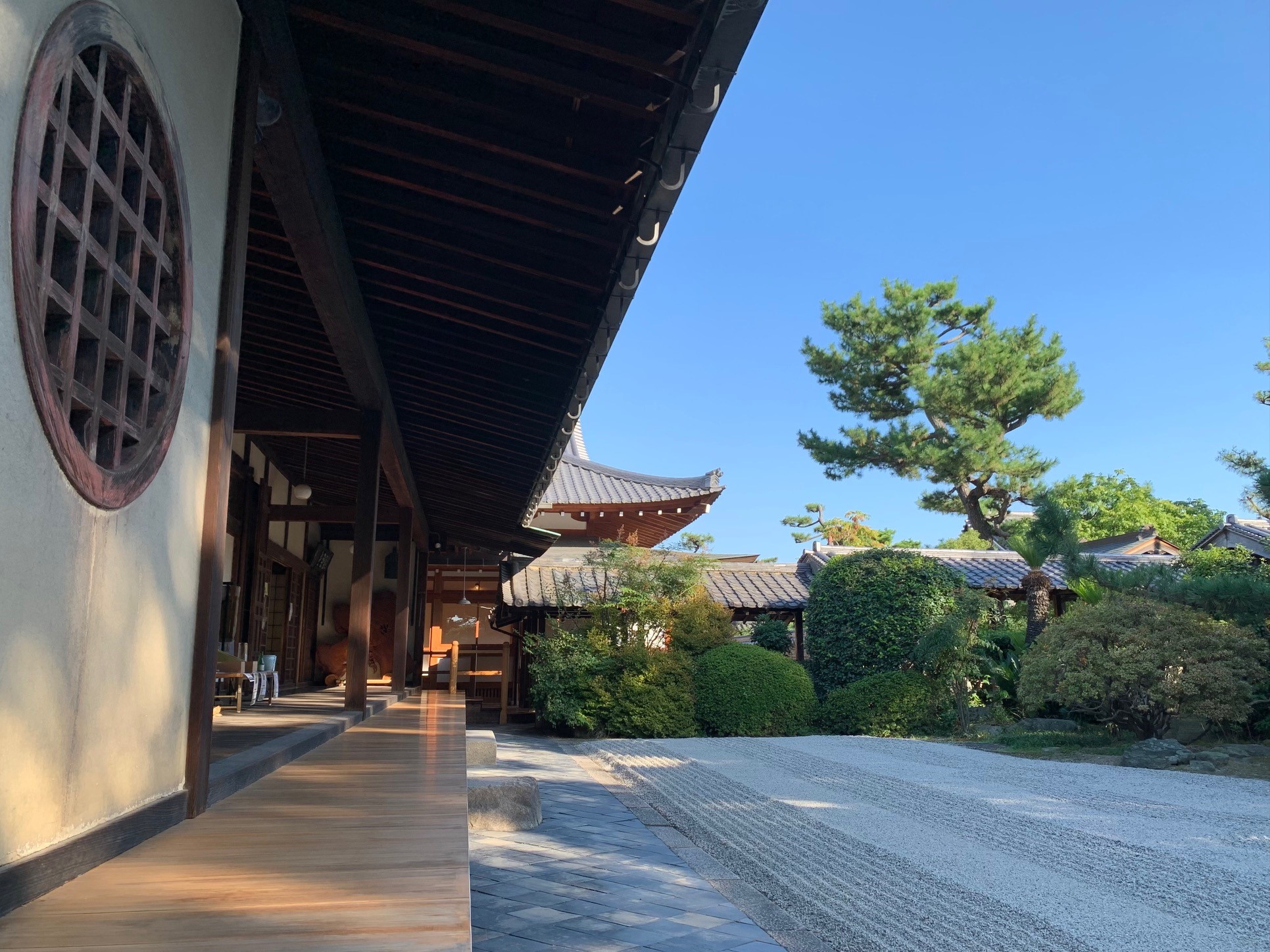
Sakai Traditional Crafts Museum (Denshokan)
This facility offers the opportunity to exhibit, buy/sell, and participate in hands-on experiences to promote and pass on Sakai’s traditional industries and artisan techniques. In addition to selling traditional industry products such as knives, cutlery, dyed goods, incense sticks, kombu, Japanese sweets, tea, soy sauce and sake, the facility also prepares seasonal, limited products and special events for the visitors.

Sakai City has a 600-year history of producing forged knives, and these high-quality products are exported around the world. It all began in the 5th century when blacksmiths from all over Japan gathered in Sakai to build large burial mounds, including the grave of Emperor Nintoku.
The production of these knives is a testament to the meticulous craftsmanship that goes into each piece. The process, which includes Base making, Pointing and forming a tang, Cooling in straw ashes, Rough hammering and grinder buffing, Trimming, quenching and tempering, Rough sharpening, removing deformation and flat sharpening, Final sharpening, removing deformation and buffing, Buffing with a wood sharpener and rubbing, Creating a hazy tarnish and sharpening the edge, Attaching a handle, Marking and final adjustment, Engraving the brand name and adjusting the angle, is a true art form.
Here in Denshokan, you can not only enjoy a knife exhibition and shop for the finest products at unbeatable prices, but you can also learn about the knife-making process and even witness some parts of it with a professional blacksmith. They will demonstrate the traditional techniques in a nearby blacksmith’s workshop and let you participate in their daily tasks.
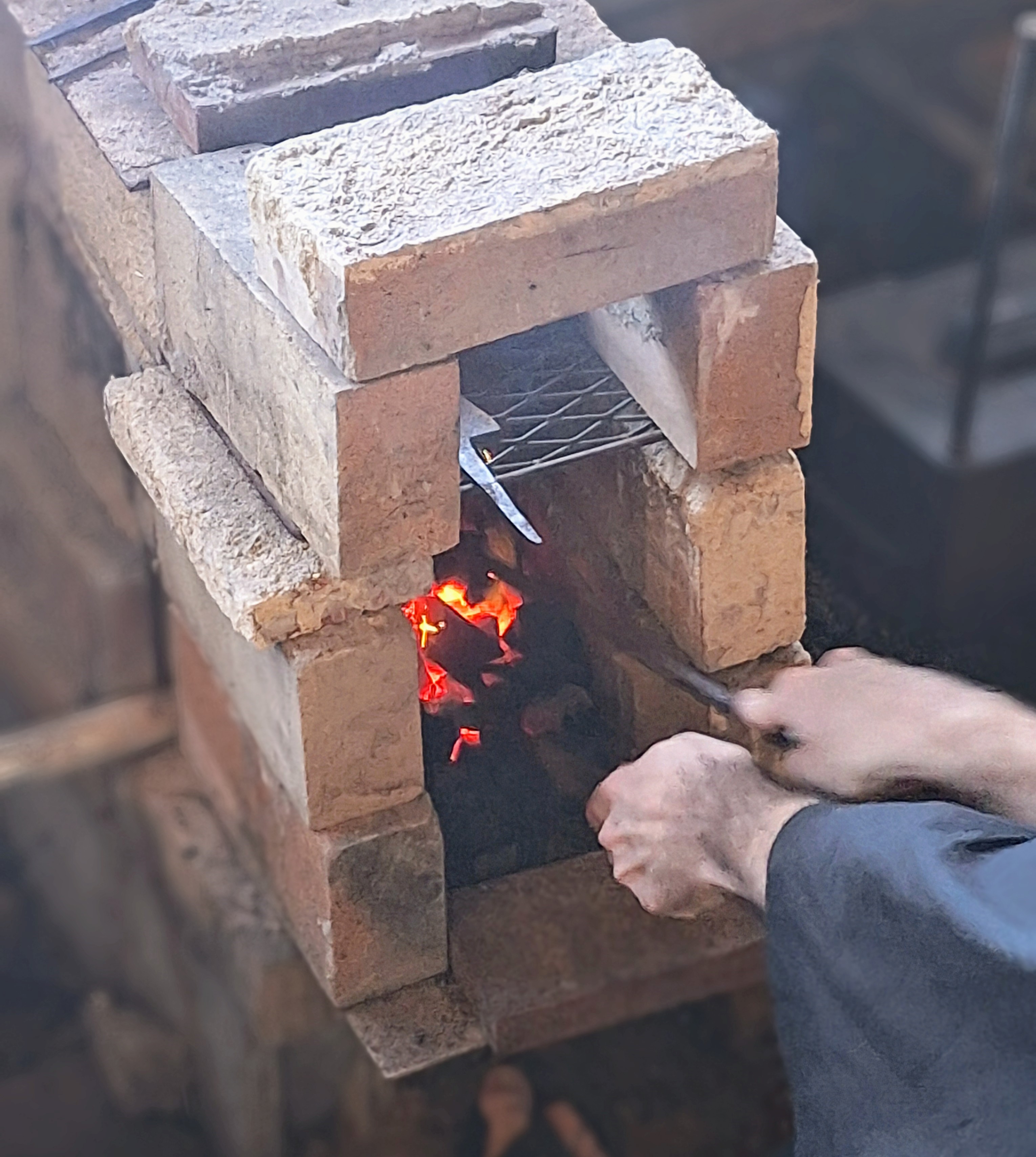
Exclusive tour of Ootori Taisha Shinto Shrine
A priest will guide you through the grounds of Otori Taisha Shrine, the Ichinomiya of Izumi Province, which enshrines Emperor Yamato Takeru.
In addition to introducing you to the essentials, the priest will also tell you about the origins of Otori Taisha Shrine and different stories about the shrine through its 1900-year-old history.
After touring the shrine grounds, you will receive a commemorative gift as a part of your participation.
Moreover, we can arrange private worship sessions for groups inside the worship hall, unavailable for tourists.
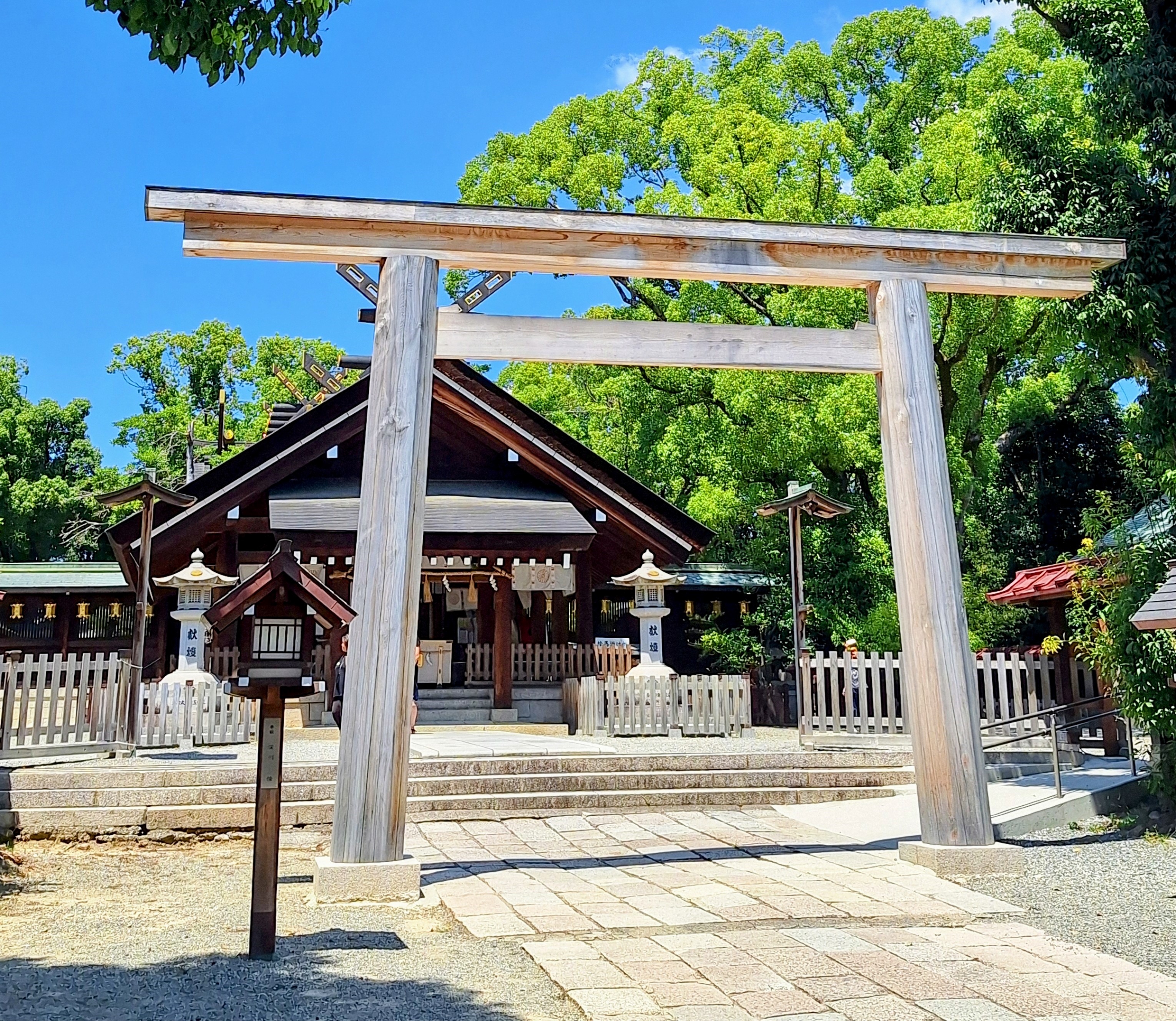
Night activity: Factory night views
The Sakai Senboku coastal industrial zone (constructed 1957-1966) is situated between the Yamato and Otsu Rivers, which flow into Osaka Bay. This area is home to petroleum, chemical, steel, metal, and other factories, as well as power and gas plants. In fact, it accounts for about 14% of the manufacturing shipment value of Osaka Prefecture. It contributed to the industrial advancement of the Hanshin area, which was centered on small and medium-sized enterprises engaged in the textile, metal, and machinery industries. The creation of this complex led to the growth of the Osaka and Kansai economies, and today’s state is a sort of monument to the period of high economic growth.
Embark on a private taxi tour that offers exclusive access to usually restricted areas, providing a unique opportunity to explore the Sakai Senboku coastal industrial zone. Take your time to capture stunning photos of the futuristic scenery and the impressive industrial complex with its science-fiction vibes, all while gaining a deeper understanding of the history of Japan’s industrialization process.

Local food experience: Anago cuisine
Before Japan’s high economic growth (mid-1950s to early 1970s), before establishing a coastal industrial zone in Sakai, many conger eels could be found in the waters around Sakai. Nowadays, it is challenging to catch conger eels in Sakai, but you can still enjoy the inherited Sakai conger eel cuisine.
Unlike their relative Unagi from fresh waters, Anago eels spend their whole life in the seawater. Although you can eat anago throughout the year in Japan, the best catch is said to be in summer.
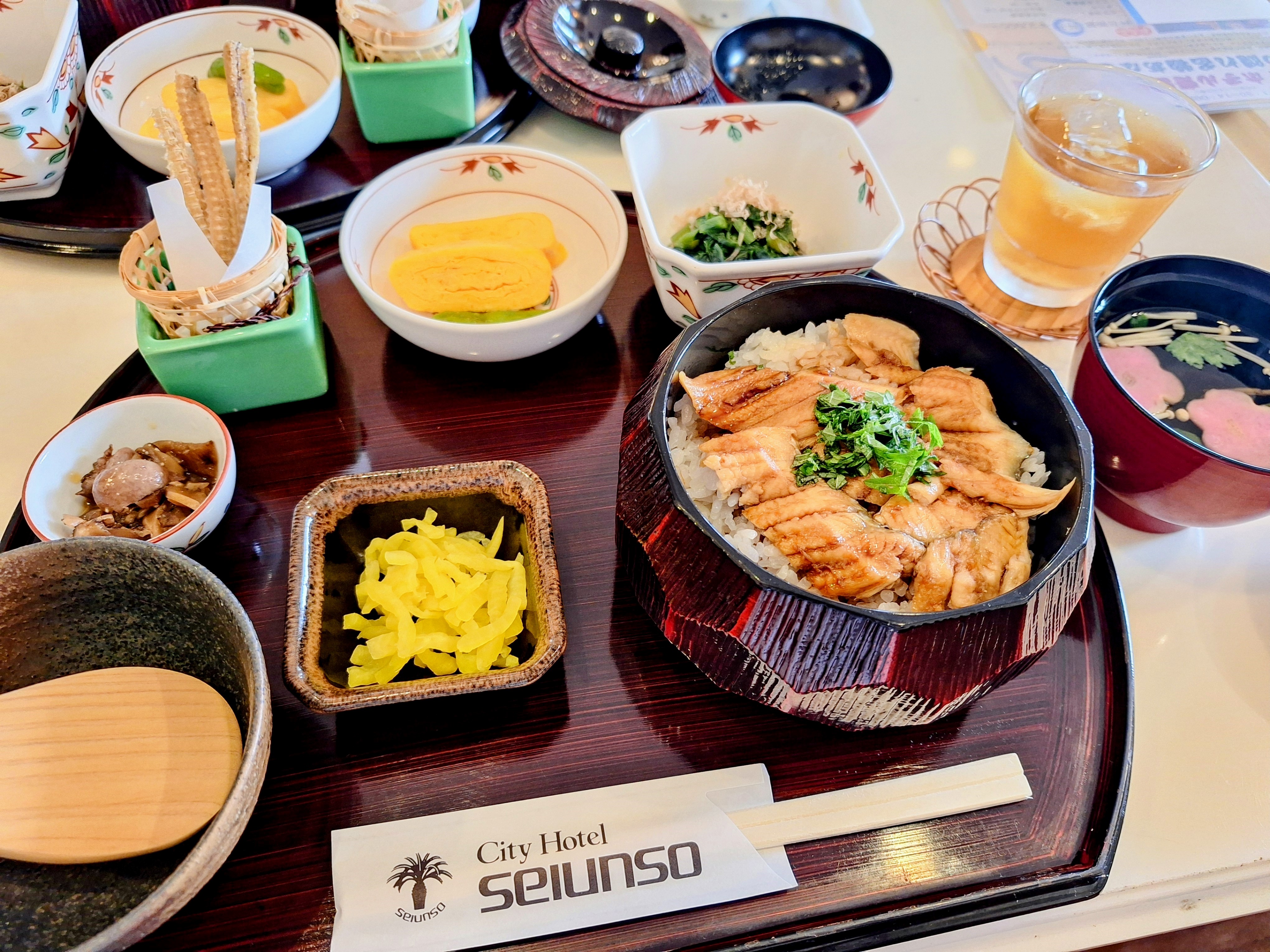
City Hotel Seiunso is specialized in anago cuisine and offers a variety of lunch/dinner set menus.
Volleyball watching and Sakai Blazers home ground tour
Sakai City takes pride in the local volleyball team called. Sakai Blazers is a men’s professional volleyball team playing in Japan’s top V. Premier League since the league’s creation in 1967. At the same time, it is the most successful team, with 18 trophies in its collection and being a runner-up seven times. Last season, Sakai Blazers came sixth.
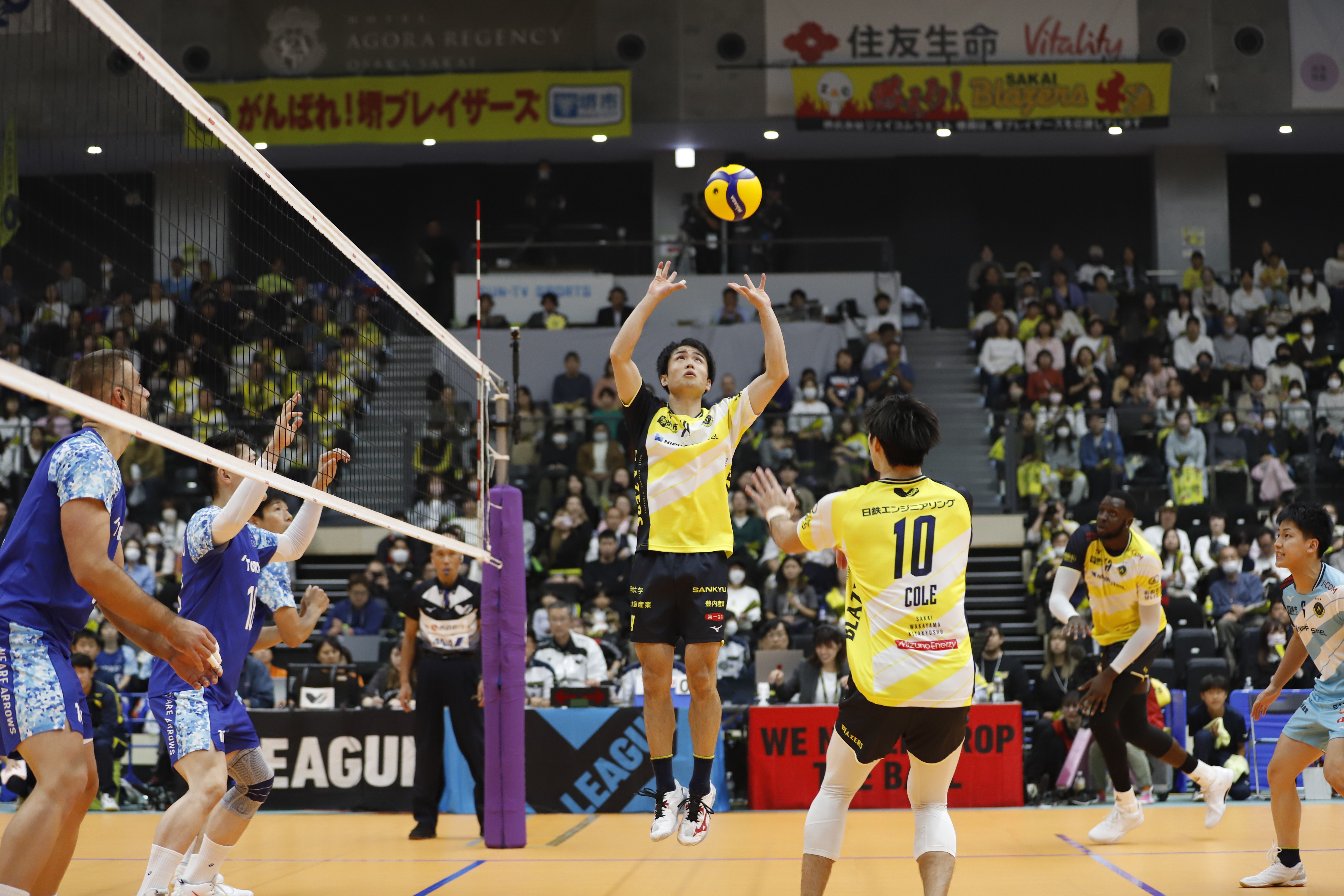
Men’s volleyball in Japan is currently enjoying historical success, and 10 out of 13 players who appeared in the Olympics in 2024 are from the domestic league. Visitors can enjoy the warm atmosphere of the Blazer’s arena in Sakai, witness top-level volleyball, tour the team’s home ground, and learn about this legendary volleyball giant in Japan.
——————————————————————————————————————–
This tour is designed for groups.
For more information on travel opportunities in Sakai, reach out to Keio Travel Agency.
Contact : dmcjapan@keio-kanko.co.jp
